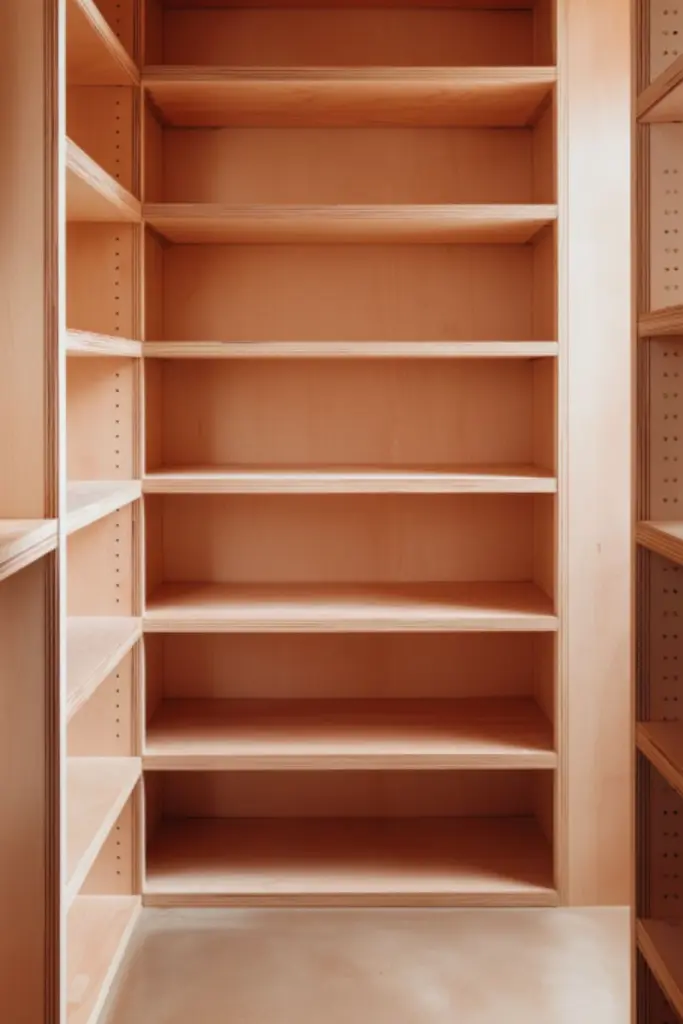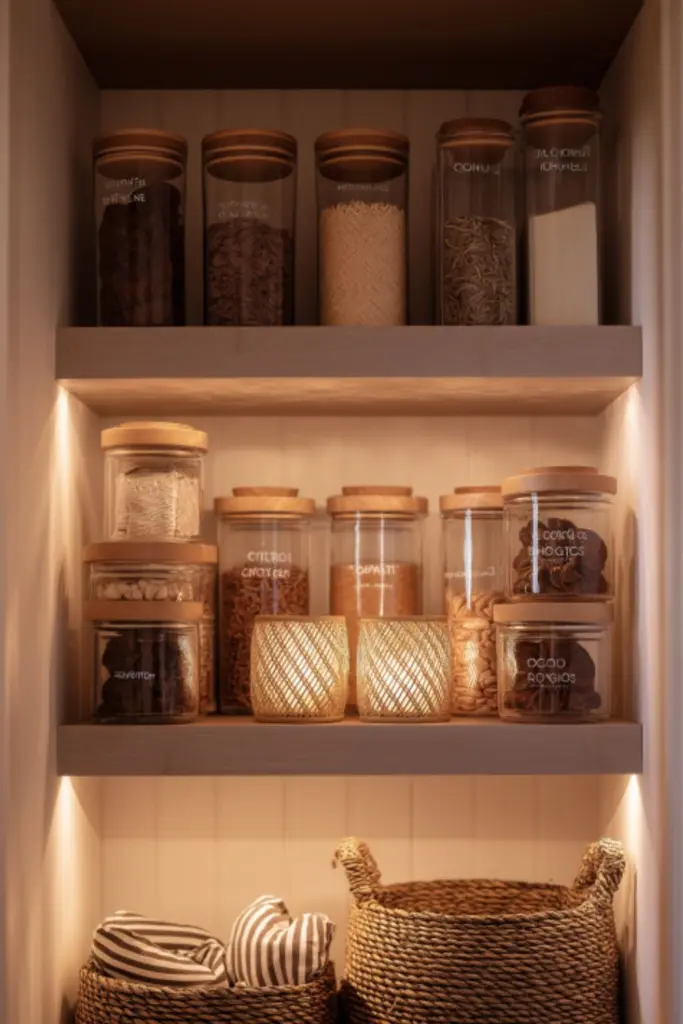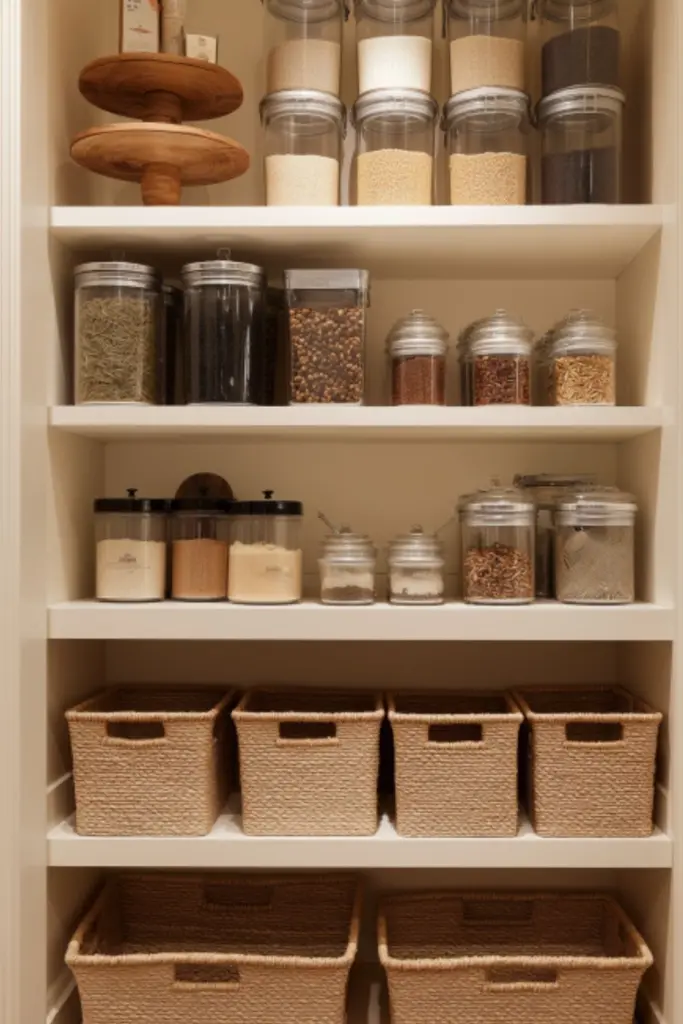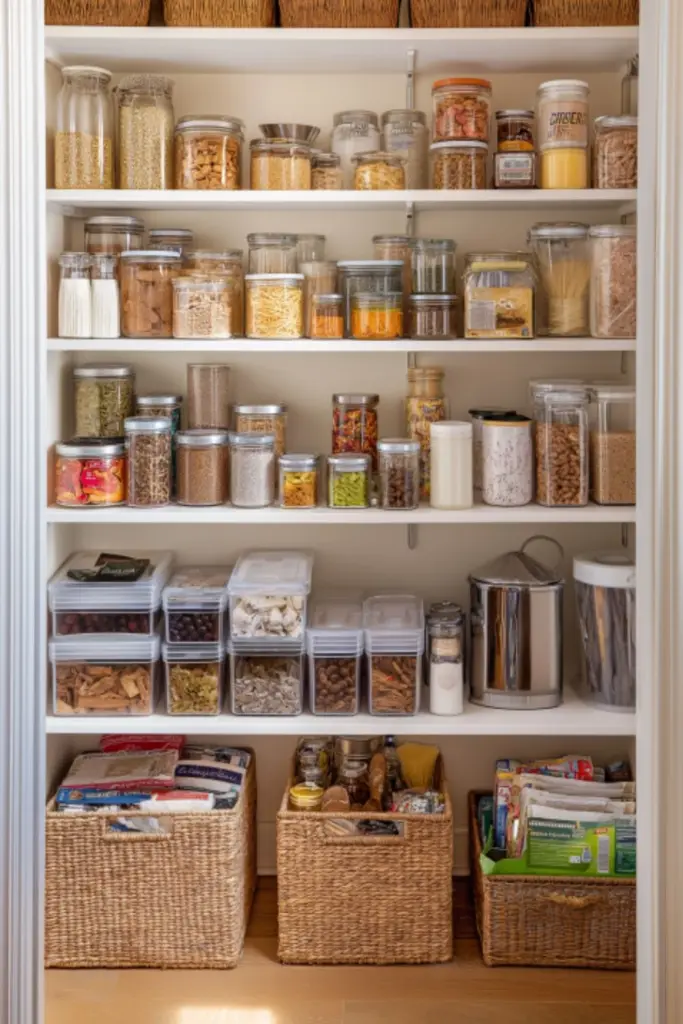Small Pantry Design That Maximizes Every Inch: Smart Storage Solutions for Tiny Spaces
Table of Contents
Have you ever opened your pantry only to be greeted by a chaotic jumble of cans, boxes, and mismatched containers? It’s a scenario shared by countless homeowners—especially those with smaller kitchens. In fact, a recent survey found pantry organization ranked as one of the top three clutter challenges in urban homes. But what if that underutilized cupboard could become one of your most efficient, beautiful spaces?
Small pantry design isn’t just about cramming more stuff onto shelves—it’s about rethinking how you store, access, and style your everyday essentials. When done thoughtfully, every inch can work smarter, not harder, increasing functionality and adding décor value at the same time.
In this comprehensive guide, we’ll explore clever small pantry design that maximizes every inch—from vertical storage hacks and sliding drawers to stylish containers and lighting features. You’ll learn actionable tips for clearing clutter, using multi-tiered solutions, defining zones, and choosing containers that both streamline your pantry and elevate its aesthetic. Whether you’re working with a shallow shelf space or a narrow closet pantry, these ideas will help you transform a tight space into a space you love to open.
Clear Out and Categorize Before You Design

Every great pantry design starts with a full reset. The best way to maximize space is to know what you’re working with—and what you’re keeping.
Remove every item from your pantry and sort through everything. Group items into categories like baking supplies, snacks, canned goods, breakfast items, and bulk storage. During this process, purge expired goods and stale leftovers—if it hasn’t been used in months, it’s time to part ways.
Once emptied, give your pantry a deep clean. Wipe down the shelves, vacuum crumbs, and consider lining them with shelf liners for easy future maintenance. Next, measure the width, depth, and height of each shelf. Note any obstructions like pipes, wiring, or uneven surfaces—these will guide your container choices and storage strategies.
Small Pantry Prep Checklist
| Step | Purpose |
|---|---|
| Empty shelves completely | Start fresh and reduce clutter |
| Sort into categories | Identify needs and storage priorities |
| Discard expired items | Reclaim space and improve organization |
| Deep clean surfaces | Ensure a clean, hygienic storage area |
| Measure shelf dimensions | Plan containers and tiered solutions accurately |
This foundational step tunes you into your pantry’s real needs and ensures every inch of space works harder from day one.
Use Clear, Coordinated Containers for Visibility

Open packaging and mismatched boxes make pantries feel cluttered, even if food is well-stocked. A unified look with clear containers not only elevates functionality but gives your small pantry a polished aesthetic.
Use clear plastic or glass jars for dry goods like flour, sugar, oats, rice, and pasta. Opt for stackable canisters to make full use of vertical height. For loose snacks or bulk items, try clear zip-top bags stored in labeled canisters or bins. Use baskets for produce like onions or potatoes—keeping them off plastic shelves to aid air circulation.
Match container shapes and materials on each shelf for visual consistency. Add waterproof, writable chalkboard or printed labels to each container: listing content and measurement helps with cooking and restocking.
Container Style Guide
| Container Type | Ideal Use | Benefit |
|---|---|---|
| Stackable canisters | Flour, rice, pasta | Saves vertical space, easy viewing |
| Glass jars | Snacks, baking items | Airtight, polished look |
| Baskets | Produce or packaged snacks | Ventilated and decorative |
| Clear bins | Bulk or miscellaneous items | Hidden structure, consistent look |
A coordinated system immediately gives your pantry a sense of calm, even when it’s fully stocked.
Maximize Vertical Space with Tiered Storage

If your pantry shelves are tall, you’re wasting vertical space. Tiered storage solutions can turn empty height into functional storage—perfect for small pantries.
Stackable bins, lazy Susans, and expandable risers are fantastic space savers. Lazy Susans in particular help access items at the back without reaching deep into shelves. Use risers for shoes-style shelving to store cans, condiments, or jars in front/back order.
Over-the-door organizers are a game-changer in cabinet-style pantries. Thin pockets can hold spice packets, foil rolls, small snacks, or tea bags. Under-shelf baskets add storage for foil, wraps, or zip-lock collections without drilling holes.
Vertical Storage Tools Table
| Tool | Best Use | Tip |
|---|---|---|
| Stackable bins/risers | Tiered display for cans and jars | Use risers in short shelves |
| Lazy Susans | Small jars or spice containers | One per shelf keeps things visible |
| Over-door pockets | Small goods and packets | Place on inside door for full use |
| Under-shelf baskets | Thin items like wraps and napkins | Install at front edge for easy access |
These clever storage layers help a small pantry feel spacious and functional.
Designate Zones for Everyday Efficiency

A pantry functions like a mini grocery store: think zones for breakfast, snacks, baking, canned goods, and after-school munchies. Clearly defined zones help make life easier and cooking smoother.
Place high-use items at eye level—breakfast foods, cereal, pasta, coffee—and keep heavy items like large cans or beverages on the bottom shelf. Low shelves or baskets can house snacks and lunchbox items so kids can access them easily.
Label the edges of shelves or bins—not only containers, but also shelf levels (e.g. “Breakfast Zone”). This aids everyone in the household, especially kids or family members less familiar with the layout.
Pantry Zoning Layout
| Zone | Shelf Level | Items Included |
|---|---|---|
| Daily Essentials | Eye to mid-level | Pasta, rice, breakfast foods |
| Baking & Prep | Mid-level | Flour, sugar, seasonings |
| Snacks | Lower level | Bars, nuts, kids’ favorites |
| Heavy Items | Floor/bottom | Beverages, bulk storage |
Zoning keeps the pantry organized by design, not luck.
Beautify with Lighting and Decorative Details
Even the most functional pantry can feel cramped and dark—especially small ones. A simple lighting upgrade goes a long way toward a stylish, functional pantry.
Install self-adhesive LED puck lights or motion-activated strips under each shelf—no wiring needed. These illuminate dark corners while adding a modern touch. For a walk-in pantry, add a stylish overhead fixture with warm tones to complement your kitchen.
Add decorative but practical accents: small faux herbs in pots, woven accent baskets, or a framed kitchen-style sign on the pantry door. Choose minimalist hardware on pull-out drawers or bins that matches your kitchen hardware.
These touches elevate the pantry beyond pure functionality into a space that blends perfectly with your home’s aesthetic.
Styling Accents Table
| Accent Element | Functional Benefit | Style Impact |
|---|---|---|
| Motion LED lights | Easy visibility, automated | Modern, sleek functionality |
| Woven accent baskets | Separation + texture | Cozy, decorative warmth |
| Matching hardware | Cohesive look with kitchen | Seamless kitchen integration |
| Faux herb accents | Softens the space | Adds life and color |
Thoughtful accents make the pantry feel curated, not just used.
Incorporate Flexible Pull-Out Solutions
Small pantries demand efficiency—not only in storage space, but how you access it. Pull-out solutions offer front-to-back reach without awkward bending.
Pull-out drawers and trays: Install slide-out wire baskets or shallow wood drawers on lower shelves. Great for canned goods, snacks, or baking mixes. Label the fronts and keep them sorted to reduce digging.
Pull-down shelving: For taller pantries, add pull-down rack hardware—think spice pull-down poles or glass ware racks—to reach high shelves safely.
Rolling cart solution: If your pantry allows, tuck in a narrow rolling cart that slides in and out like a large drawer. Use it for oils, vinegar, snacks, or small appliances.
Pull‑Out Storage Solutions
| Pull-Out Type | Ideal Use | Space Consideration |
|---|---|---|
| Slide-out wire baskets | Snacks, cans, small packaged goods | Minimal clearance required |
| Wooden pull-out trays | Baking or prep items | Customize depth to shelf size |
| Pull-down spice rack | High shelf spices or oils | Good for tall but unused spaces |
| Narrow rolling cart | Oils, vinegars, condiments | Requires pantry width plus clearance |
These dynamic solutions improve space usability and pantry longevity—then turn your eye-level shelves into luxury showcases since everything’s accessible.
Plan for Upkeep and Seasonal Adjustments
A beautifully designed pantry is only as good as your ability to maintain it—and small spaces require diligent upkeep. Here’s a deeper look at strategies to ensure longevity and adaptability.
Rotate and seasonally refresh
Set a quarterly pantry check date. Clear expired items, move soon-to-expire goods to eye level, and note upcoming needs. This keeps grocery restocking accurate and reduces clutter.
Flexible containers and zones
Use removable shelf risers and stackable containers. When seasons or eating habits shift—think holiday baking or summer BBQ supplies—you can rezone sections on the fly without costly refits.
Family-friendly access
Label containers with pictures or simple words so everyone can find and add things correctly. Young family members can grab snacks or pasta themselves and return items without assistance.
Scheduled deep cleaning
Set up a biannual cleanout with empty bins and wipe-down shelves. Check lighting, labels, and organization tools. Plan a seasonal aesthetic update (e.g. fall themes, new labels) to keep the pantry engaging and refreshed.
Maintenance & Refresh Plan
| Task | Frequency | Purpose & Tips |
|---|---|---|
| Pantry reset | Every 3 months | Clear expired foods, reconfigure zones |
| Deep clean | Semi-annually | Sanitize, relabel, check lighting |
| Label/logo refresh | Seasonally | Replace worn labels, update themes |
| Family restock check | Monthly | Keep essentials accessible and full |
An organized pantry isn’t a one-time project—it’s a rhythm. These consistent practices ensure your small pantry remains efficient and beautiful year-round.
Conclusion
Designing a small pantry that maximizes every inch takes vision, planning, and smart habits—but it’s absolutely achievable. By clearing clutter, choosing coordinated containers, using vertical storage, and adding thoughtful pull-out solutions, what once felt cramped can become one of your kitchen’s star features.
Remember to create zones that make sense, build in styling touches like lighting and baskets, and most importantly, maintain the system with routine seasonal upkeep. When your pantry works well, the ripple effect touches your cooking efficiency, grocery habits, and even stress levels around meal prep.
In essence, optimizing a small pantry is more than just storage—it’s about empowering your kitchen flow and elevating everyday life. With these strategies, every inch counts—and every visit to the pantry becomes a satisfying experience.

